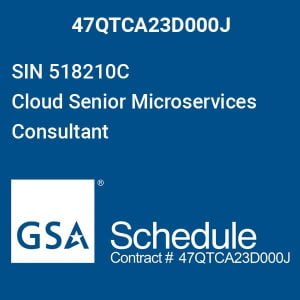gsa schedule
The General Services Administration GSA Schedule program is a cornerstone of federal government procurement in the United States. Designed to simplify and expedite the acquisition process, the GSA Schedule program offers a pre-negotiated contract vehicle through which federal agencies can access a wide array of products and services from qualified suppliers. This streamlined approach to procurement enhances efficiency, reduces costs, and ensures that government agencies can quickly acquire the goods and services they need to fulfill their missions.
- A Comprehensive Contract Vehicle:The GSA Schedule program covers a vast spectrum of goods and services, making it one of the most comprehensive contracting solutions available to federal agencies. From IT solutions and professional services to office supplies and facility maintenance, the program’s scope is virtually limitless. This breadth of offerings simplifies the procurement process, as agencies can find and procure what they need within the program, reducing the need for time-consuming and complex competitive bidding.
- Efficiency and Savings:One of the primary advantages of the GSA Schedule program is its ability to save both time and money. By pre-negotiating prices and terms with suppliers, GSA ensures that federal agencies can access cost-effective solutions quickly. The streamlined acquisition process significantly reduces administrative burden and procurement lead times. Agencies can leverage their buying power to secure advantageous terms, resulting in substantial savings for taxpayers.
- Compliance and Oversight:The GSA Schedule program places a strong emphasis on compliance and transparency. All suppliers participating in the program undergo a rigorous vetting process, ensuring that they meet the highest standards of integrity and quality. GSA regularly reviews and monitors contracts to verify that suppliers continue to meet these standards throughout the life of their contracts.
- Ease of Use:One of the key advantages of the GSA Schedule program is its user-friendliness. Federal agencies can access the program’s offerings through the GSA eBuy platform, where they can search for products and services, compare prices, and place orders. This centralized system simplifies procurement and enhances competition, benefiting both buyers and suppliers.
- Small Business Opportunities:The GSA Schedule program is committed to fostering small business participation. It includes designated sub-programs, such as the GSA Schedules Small Business (GSSB) program, which focuses on ensuring that small businesses have access to federal contracting opportunities. These initiatives create a level playing field for small businesses, promoting economic growth and innovation.
- Innovation and Sustainability:The GSA Schedule program is not static; it evolves to meet the changing needs of government agencies and the American people. As sustainability and innovation become increasingly important, the program adapts to incorporate eco-friendly and cutting-edge solutions. Agencies can access innovative technologies and sustainable products through the GSA Schedule program, supporting environmental goals and modernization efforts.
- Customer Support:GSA’s commitment to customer support is unwavering. Agencies can access a wealth of resources, including training, webinars, and guidance, to help them navigate the GSA Schedule program effectively. GSA representatives are available to assist agencies at every stage of the procurement process, ensuring that they make informed decisions and obtain the best value for their acquisitions.
- Strategic Sourcing:The GSA Schedule program aligns with the government’s strategic sourcing objectives. By consolidating procurement efforts, the program leverages the buying power of federal agencies to negotiate favorable terms with suppliers. This strategic approach optimizes the allocation of resources and enhances the government’s ability to respond to emerging challenges.
In conclusion, the GSA Schedule program stands as a testament to the federal government’s commitment to efficient, transparent, and cost-effective procurement. With its broad scope, ease of use, and dedication to compliance and small business participation, the GSA Schedule program continues to be an indispensable resource for government agencies seeking to fulfill their missions while maximizing taxpayer value. By streamlining the acquisition process, promoting innovation, and fostering sustainability, the GSA Schedule program remains a driving force in advancing the efficiency and effectiveness of government procurement in the United States.












